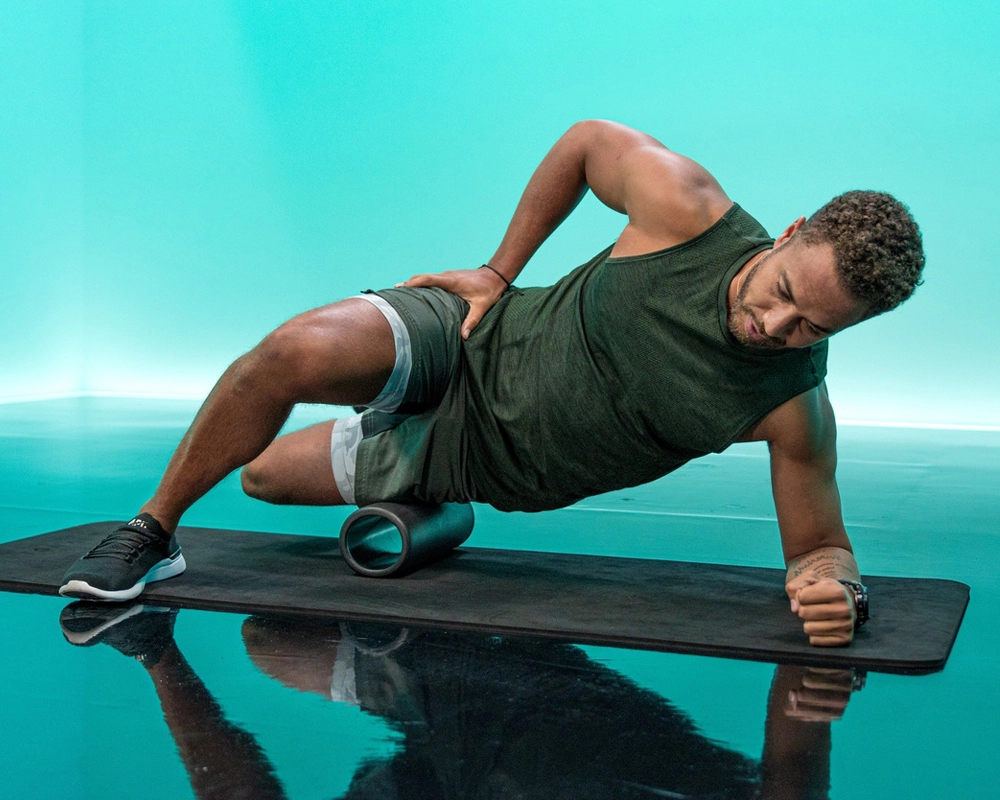
Tight hips are a common problem for many people, especially those who lead a sedentary lifestyle or spend a lot of time sitting. Tightness in the hip muscles can lead to a range of issues, including lower back pain, hip pain, and even knee pain. The good news is that there are several foam roller exercises that can help to release tension in the hips and improve flexibility. In this article, we will explore some of the best foam roller exercises for tight hips.
Before we get started, it is important to understand why foam roller exercises can be so effective. Foam rolling is a self-massage technique that involves rolling a foam cylinder over tight or sore muscles. This helps to break up adhesions and knots in the muscle tissue, which can improve circulation and alleviate pain. Foam rolling can also help to improve range of motion and flexibility, making it a great tool for those with tight hips.
Hip flexor stretch
The hip flexors are a group of muscles that connect the hip bones to the thigh bones. They are responsible for lifting the legs and bringing the knees towards the chest. Tight hip flexors can cause pain and restriction in the hips, lower back, and legs. The hip flexor stretch is an excellent foam roller exercise that can help to release tension in these muscles.
To perform the hip flexor stretch, begin by placing the foam roller under your right hip. Place your left foot on the ground in front of you, and bring your right knee up towards your chest. Use your hands to support your knee as you roll back and forth over the foam roller. Continue rolling for 30 seconds to 1 minute before switching sides.
Piriformis stretch
The piriformis is a small muscle located deep in the buttock. It is responsible for rotating the hip and stabilizing the pelvis. Tightness in the piriformis can cause pain in the lower back, hips, and legs. The piriformis stretch is an effective foam roller exercise for releasing tension in this muscle.
To perform the piriformis stretch, sit on the foam roller with your knees bent and your feet on the ground. Cross your right ankle over your left knee, and lean to the right, placing your weight on your right hip. Roll back and forth over the foam roller, targeting the area around the piriformis muscle. Continue rolling for 30 seconds to 1 minute before switching sides.
IT band stretch
The iliotibial (IT) band is a thick band of connective tissue that runs from the hip down to the knee. It is responsible for stabilizing the knee during movement. Tightness in the IT band can cause pain and discomfort in the knee, hip, and lower back. The IT band stretch is an effective foam roller exercise for releasing tension in this muscle.
To perform the IT band stretch, lie on your side with the foam roller under your right hip. Extend your right leg and cross your left leg over your right knee. Use your left foot to control the pressure as you roll up and down the length of your IT band. Continue rolling for 30 seconds to 1 minute before switching sides.
Glute stretch
The glutes are a group of muscles that make up the buttocks. They are responsible for hip extension and rotation. Tightness in the glutes can cause pain in the hips, lower back, and legs. The glute stretch is an excellent foam roller exercise for releasing tension in these muscles.
To perform the glute stretch, sit on the foam roller with your knees bent and your feet on the ground. Cross your right ankle over your left knee, and lean to the right, placing your weight on your right hip. Roll back and forth over the foam roller, targeting the area around the glutes. Continue rolling for 30 seconds to 1 minute before switching sides.
Quad stretch
The quadriceps are a group of muscles located on the front of the thigh. They are responsible for extending the knee and flexing the hip. Tightness in the quads can cause pain and restriction in the hips and knees. The quad stretch is a great foam roller exercise for releasing tension in these muscles.
To perform the quad stretch, lie face-down on the foam roller with the roller under your thighs. Use your arms to support your upper body as you roll up and down the length of your quads. Continue rolling for 30 seconds to 1 minute.

